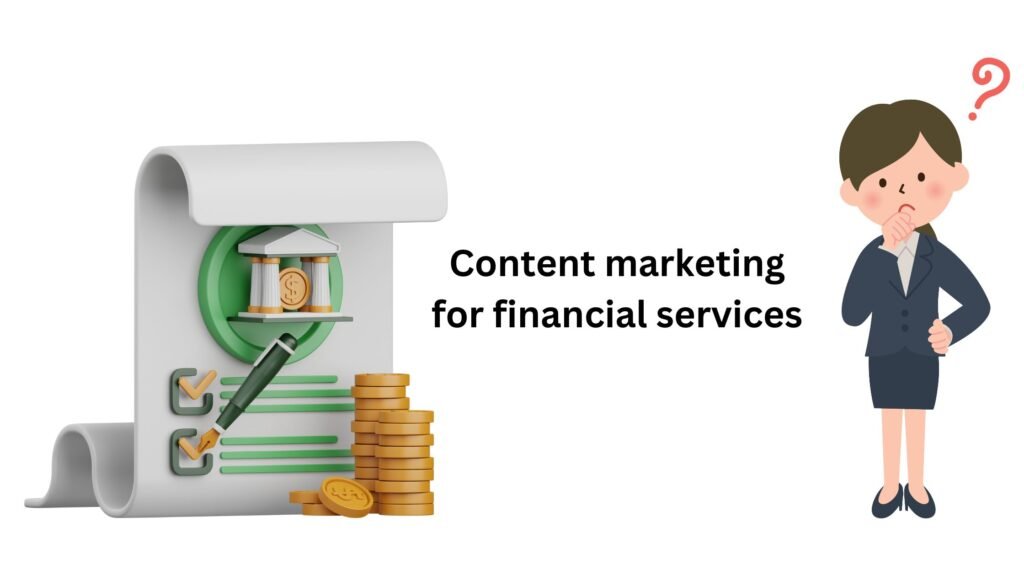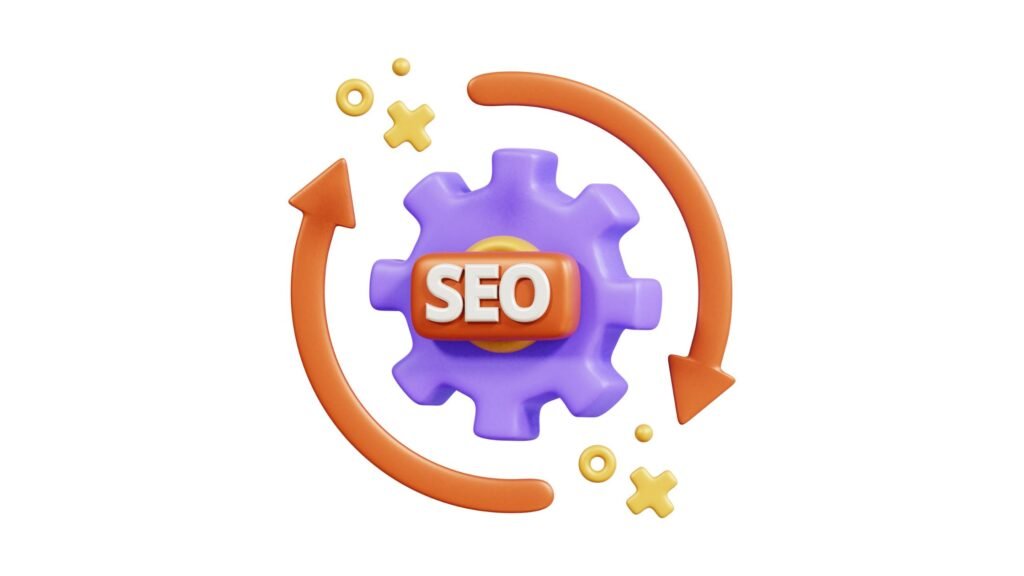
In the rapidly evolving world of finance, where a growing proportion of consumers rely on digital platforms to channel their banking, investment, and financial planning needs, Content marketing has evolved into an essential tool for financial service providers to connect with and engage their target audience. This blog post will delve deep into content marketing for financial services, exploring strategies and best practices that can help you build trust, establish authority, and drive business growth.
What Is Content Marketing For Financial Services?

Content marketing within the financial services sector is a strategic approach that encompasses creating, distributing, and promoting valuable and relevant content to engage, educate, and attract a specific target audience within the financial industry. This marketing strategy is designed to build trust, establish authority, and drive business growth for banks, investment firms, insurance companies, financial advisors, and other organizations offering financial products and services.
The Importance Of Content Marketing In Financial Services
Content marketing entails creating, disseminating, and delivering valuable, relevant, and consistently engaging content to attract a specific audience. For financial service providers, this approach is efficient for several reasons:
- Educating the Audience: Financial decisions can be complex and intimidating for many individuals. Content marketing allows financial institutions to simplify complex concepts, provide educational resources, and empower consumers to make informed decisions.
- Building Trust: Trust is paramount in the financial industry. High-quality content can establish trust by demonstrating expertise, transparency, and a commitment to helping clients achieve their financial goals.
- Brand Awareness: Content marketing helps financial institutions build brand awareness and differentiate themselves from competitors. Consistently producing valuable content can position your brand as a thought leader.
- Lead Generation: Well-crafted content can attract potential customers and generate leads. Encouraging visitors to provide their contact information or engage with your services by providing valuable information is a viable option.
Also read: The Importance of content marketing for small business
Crucial Steps For Developing An Efficient Content Marketing Strategy
To succeed in content marketing for financial services, you need a well-thought-out strategy. Here are the critical steps to creating an effective plan:
1. Define Your Audience
The cornerstone of strategy lies in comprehending your target audience and any successful content marketing strategy. Identify its demographics, financial goals, pain points, and preferred communication channels. This information will guide your content creation efforts.
2. Set Clear Goals
Define specific, measurable, and achievable goals for your content marketing efforts. Typical objectives include increasing website traffic, generating leads, nurturing leads into customers, and enhancing brand reputation.
3. Content Creation
Create high-quality, relevant, engaging content addressing your audience’s needs and concerns. Types of content that work well in financial services include:
- Educational Articles: Explain financial concepts, investment strategies, and tax planning clearly and straightforwardly.
- Case Studies: Showcase the success stories of clients who have benefited from your services.
- Videos: Create informative videos on financial topics, market updates, and investment advice.
- Infographics: Utilize infographics to streamline intricate data through visual representation and statistics.
- Webinars and Podcasts: Conduct live webinars or podcasts to engage with your audience and deliver real-time insights.
4. SEO Optimization And Keyword Strategy
Enhance your content for search engines through thorough research and optimization integrating relevant keywords. That will contribute to elevating the ranking of your content in search results, driving organic traffic to your website.

Here Are The Key Elements Of SEO And Keyword Strategy:
A. Conducting keyword research:
- Keyword research is identifying the specific words and phrases people use when searching for information related to your content. It’s essential to choose relevant and high-traffic keywords. Utilize tools such as Google Keyword Planner to assist you in discovering these keywords.
B. On-page optimization:
On-page optimization includes fine-tuning individual web pages to make them search engine-friendly. This includes:
- Keyword Placement: Incorporating selected keywords into the content, headings, meta tags, and image alt text in a natural and relevant manner.
- Quality Content: Creating high-quality, informative, and engaging content that satisfies user intent
- Page Speed: Guaranteeing swift and efficient loading of your web pages, as page speed is a ranking factor.
- Mobile Optimization: Ensuring responsiveness and adaptability for your website accessible on mobile devices
- Internal Linking: Establishing links to other pertinent pages within your website to improve navigation and the user experience.
C. Building backlinks:
- Backlinks recognized as inbound links, denote links from external websites pointing to your site. High-quality backlinks from authoritative sources can significantly improve your website’s authority and search engine ranking. Building backlinks can involve strategies like guest posting, outreach to industry influencers, and creating shareable content.
D. Monitoring and improving SEO performance:
- SEO is an ongoing process. Regularly monitor your website’s performance using tools like Google Analytics and Google Search Console. Monitor crucial metrics like organic traffic, click-through rates, and keyword rankings.
- Use the data you gather to make informed decisions and improve your SEO strategy. This might involve adjusting your keyword targeting, optimizing underperforming pages, or addressing technical SEO issues like broken links or crawl errors.
5. Content Distribution And Promotion
Promote your content through various channels, including your website, blog, social media, email marketing, and third-party platforms. Tailor your distribution strategy to reach your target audience effectively.

Content distribution and promotion are crucial in getting your financial content in front of your target audience. Here are the key aspects of content distribution and promotion:
A. Choosing the proper distribution channels:
- Social media:
- Share your financial content on relevant social media platforms like LinkedIn, Twitter, Facebook, and Instagram. Tailor your messaging to each platform and engage with your audience through comment responses and participating in discussions.
- Email marketing:
- Send out regular newsletters to your subscribers featuring your latest content, financial tips, and updates. Segment your email list to provide personalized content to different groups within your audience.
- Guest posting:
- Collaborate with reputable websites or blogs in the financial industry to publish guest posts, allowing you to tap into their established audiences and build backlinks to your content, improving SEO.
B. Consistency in Posting Schedule:
- Consistency is vital in content distribution. Set a posting schedule and adhere to it consistently. Whether daily, weekly, or monthly, Consistently following a posting schedule aids in maintaining audience engagement and information. Use content calendars to plan and ensure a steady flow of content.
C. Paid advertising options:
- Paid advertising can complement your organic content distribution efforts. Consider the following options:
- Pay-Per-Click (PPC) Advertising: Utilize platforms such as Google Ads or social media advertising to focus on particular keywords or demographics with your financial content.
- Sponsored Content: Promote your content on social media platforms by paying to boost posts or run sponsored content campaigns. That can increase visibility among your target audience.
- Email Campaigns: Invest in marketing campaigns to reach a broader audience or retarget previous visitors to your website.
- Content Discovery Platforms: Explore content discovery networks like Taboola or Outbrain to promote your articles and reach a wider audience.
6. Consistency And Monitoring
Success in content marketing hinges on consistency. Sustain a consistent publishing schedule to keep your audience engaged. Additionally, monitor the performance of your content using analytics tools to measure its impact on your goals.

Measuring and analyzing the results of your financial services content marketing efforts is essential to assessing the effectiveness of your strategy and making data-driven improvements. Here are the key elements of measuring and analyzing results:
- Website Traffic:
- Monitor the number of visitors to your website. An increase in traffic can indicate the success of your content in attracting an audience.
- Conversion Rates:
- Track the percentage of visitors who take desired actions, such as signing up for newsletters, requesting consultations, or downloading resources.
- Lead Generation:
- Measure the number of leads generated through your content, including form submissions, email sign-ups, or other contact information collected.
- Engagement Metrics:
- Track metrics such as time on page, bounce rate, and pages per session to assess how engaged your audience is with your content.
- Click-Through Rates (CTR):
- Analyze CTR on calls-to-action (CTAs) within your content to see how effectively they drive desired actions.
- Social Media Metrics:
- Track likes, shares, comments, and follower growth on social media platforms to assess your content’s reach and engagement. Content.
- Keyword Rankings:
- Keep an eye on the rankings of your targeted keywords in search engine results. Improvements can indicate the effectiveness of your SEO efforts.
- Customer Acquisition Cost (CAC):
- Determine the expense of acquiring a new customer via your content marketing efforts. That helps assess the ROI of your campaigns.
- Retention and Loyalty:
- Measure customer retention rates and assess customer satisfaction through feedback and surveys.
What Are The Benefits Of Content Marketing For Financial Services?
Utilizing content marketing is a potent strategy for businesses in the financial services sector. It offers many benefits to help organizations establish their authority, connect with their target audience, and drive business growth. Here’s an introduction to some of the critical advantages of content marketing for financial services:
- Trust and Credibility: establish trust and expertise in the industry.
- Education: simplifies complex financial concepts for clients.
- Lead Generation: Attracts potential clients and generates leads.
- Brand awareness: increases visibility and differentiation.
- SEO and organic traffic: boost search engine rankings.
- Cost-Effective: Offers a cost-effective marketing strategy.
- Customer Engagement: Keeps existing clients engaged and informed.
- Compliance: Allows for compliance with industry regulations.
- Data Insights: Provides valuable data for strategy improvement.
Illustrations Of Prosperous Content Marketing Campaigns Within The Realm Of The Financial Services Industry
Here are examples of successful content marketing campaigns in the financial services industry that have effectively engaged audiences and achieved remarkable results:
1. American Express OPEN Forum:
- Objective: American Express created the OPEN Forum, an online platform dedicated to helping small business owners with resources, advice, and insights.
- Success: The OPEN Forum became a valuable resource for small businesses, offering articles, videos, and webinars on finance, marketing, and management. It helped American Express establish itself as a thought leader and contributed to customer loyalty and acquisition.
2. Mint’s Personal Finance Blog:
- Objective: Mint, a personal finance management tool, launched a blog providing practical financial advice and tips to users.
- Success: The blog helped users better understand personal finance and strengthened Mint’s relationship with its customers. It also attracted a wider audience interested in managing their finances, positioning Mint as a helpful tool for financial management.
FAQs
Q1. What is content in financial accounting?
A. In financial accounting, “content” refers to the information, data, and records that pertain to a company’s financial transactions, including income, expenses, assets, liabilities, and equity. This content is used to prepare financial documents like the balance sheet income report, encompassing the financial statement trio of the balance sheet, income statement, and cash flow statement, offering a comprehensive perspective of the company’s financial health and performance.
Q2 How often should financial institutions publish content?
A. The frequency of content publishing can vary, but consistency is essential. Financial institutions should aim for a regular posting schedule that aligns with their audience’s needs and resources.
Q3. What is an example of a finance blog?
A. An example of a finance blog is “The Motley Fool,” which provides its readers with investment advice, stock market insights, and personal finance tips.
Conclusion
In today’s digital era, content marketing plays a pivotal role in the success of financial services in the financial industry. Specifically tailored for financial services, it helps build trust and authority and serves as a vital educational tool, simplifying complex financial concepts for consumers. Moreover, content marketing for financial services is an effective lead-generation strategy, allowing firms to connect with potential clients and nurture relationships over time. However, content must adhere to strict compliance standards in the highly regulated financial industry.
To continue the conversation on content marketing for financial services, please share your thoughts and questions by commenting on our blog. Your input is valuable, and we look forward to engaging with you further.








No Comments